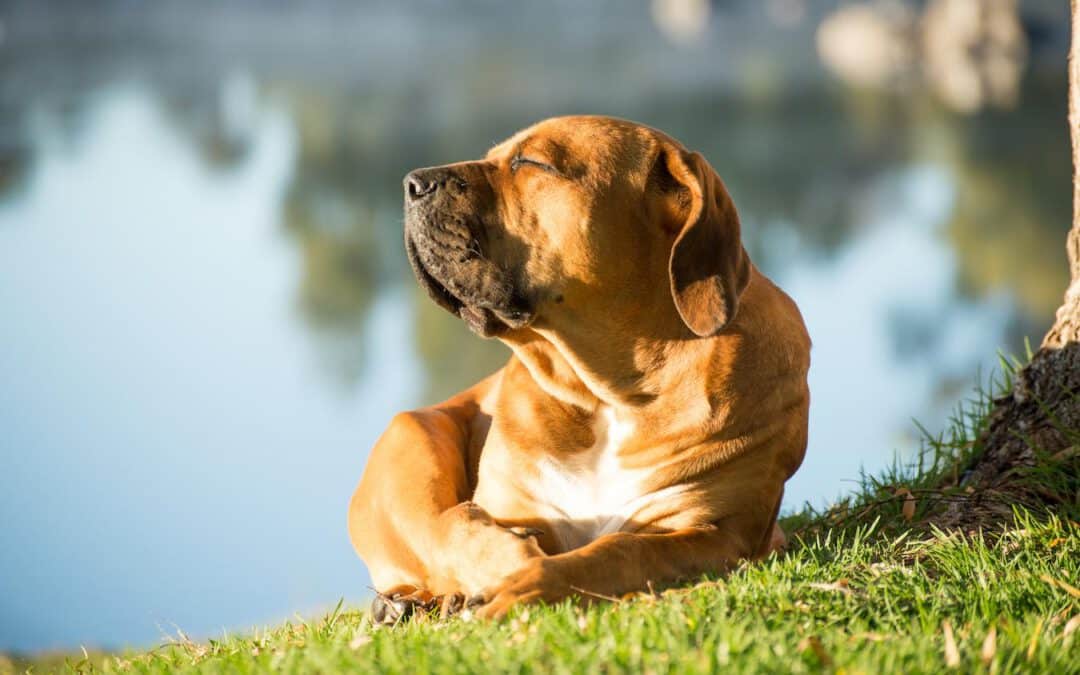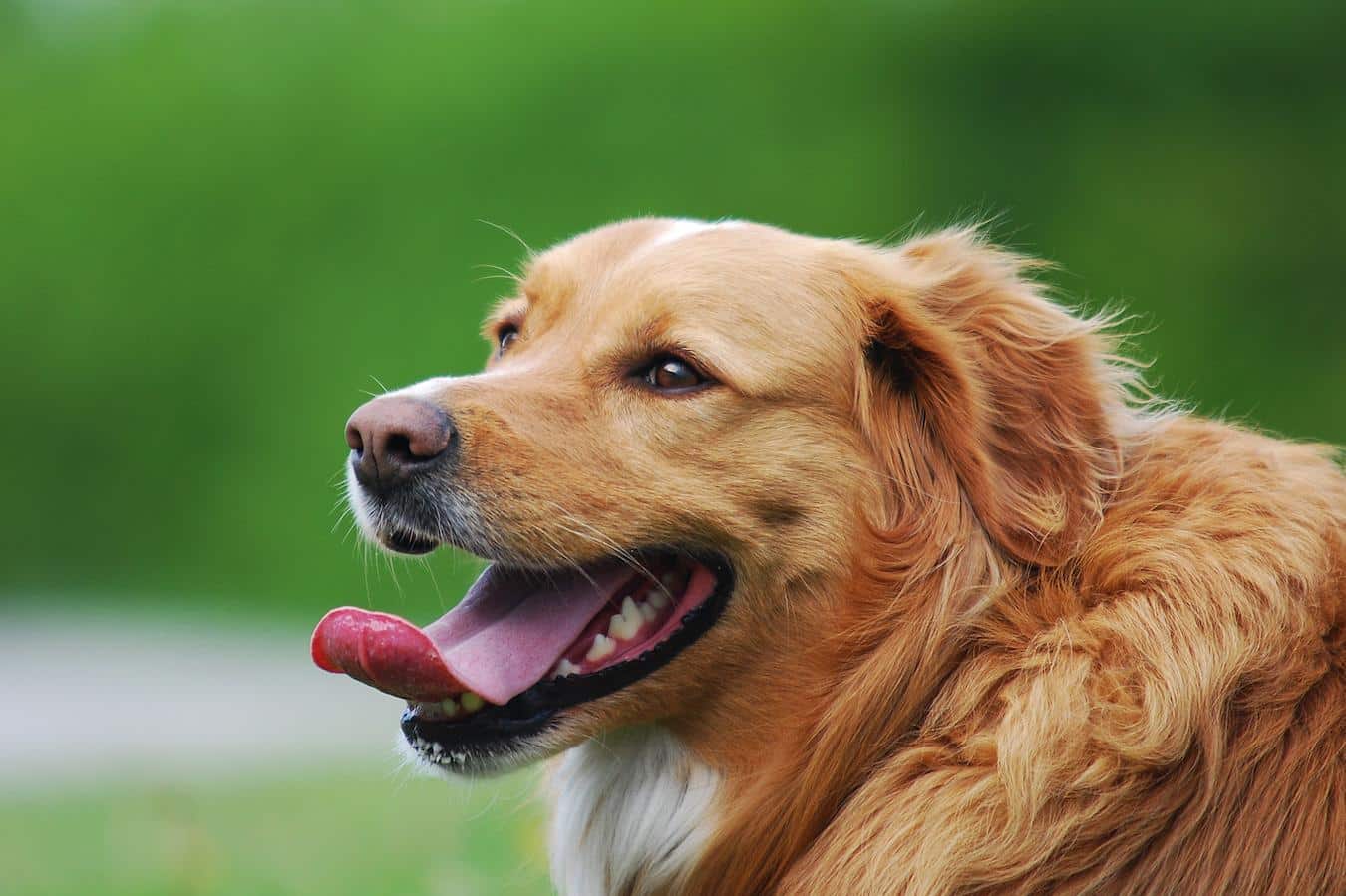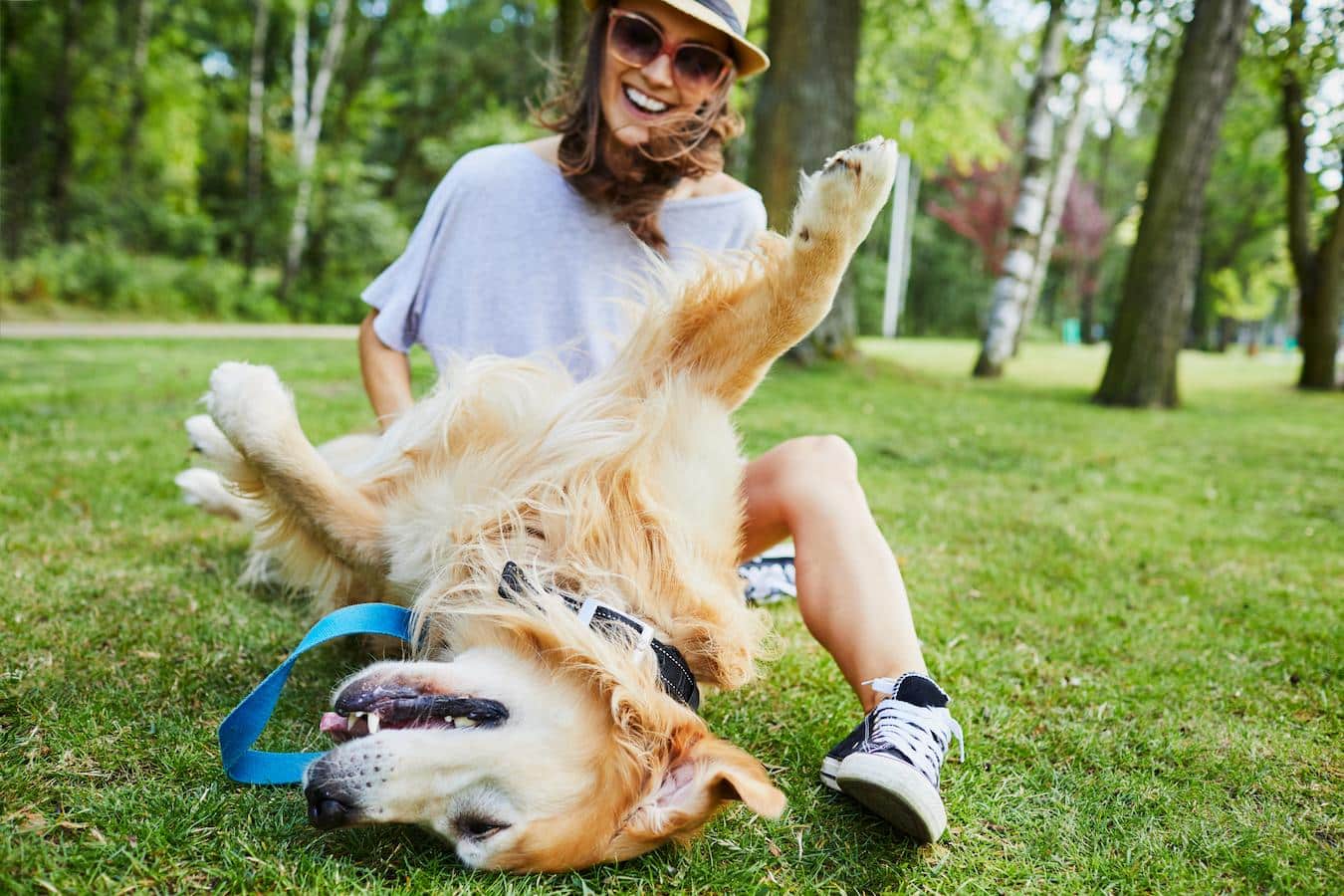Are you worried about how the summer sun might impact your pup’s lifestyle? Regular walks are an important part of your furry friend’s routine, but hot weather can be dangerous if they spend too much time outdoors.
Before engaging in a spirited session of fetch at the park, you should be aware of how hot temperatures can affect your dog’s health. Some dogs are more susceptible to overheating and can have difficulty tolerating high temperatures.
At a Glance
- Temperatures between 80°F and 90°F can be dangerous for your dog, potentially putting them at risk for heatstroke and heat exhaustion.
- If it’s over 80°F, limit your time outside and ensure your furry friend has access to plenty of shade and water.
- Dogs with flat faces are more prone to heatstroke, as their short snout makes it difficult to stay cool by panting.
- If you notice signs of heatstroke in your dog, take them to the vet right away.
Keep reading to learn more about how you can keep your pup cool and safe when the temperatures rise.
See Related: How To Trim Your Dog’s Nails So They Don’t Freak Out
What Temperature Is Too Hot for Dogs?
Before dogs became domesticated, their wild ancestors survived in the harsh outdoors year-round. Now, your canine companion lives alongside you in a climate-controlled environment. So, when the weather starts to take a turn for the worse, your furry friend might not be able to deal with it as well as you might think.
Temperatures above 89° Fahrenheit can put your pup at risk of heat stroke and heat exhaustion. Many outdoor activities can get dangerous when it’s 80°F or hotter. Even 70°F to 77°F can be too hot for some canines.
If it’s over 80°F, try to limit your time outdoors and ensure your dog has access to plenty of water and shade. As a general rule of thumb, if it’s too hot for you, then it’s too hot for your dog.
What Hot Temperatures Can Dogs Tolerate?
Every pet parent knows that their furry baby is unique. It’s hard to give a concrete temperature that is too hot for dogs. Some pups will have a slightly different heat tolerance.
So, what factors can affect your furry friend’s heat tolerance?
Size & Weight
Small dogs are able to dissipate heat much more efficiently than larger dogs. Overweight dogs are also more prone to heat-related illnesses.
Breed
Certain dog breeds are better suited to deal with hot days. Siberian Huskies have a thick coat of protective fur that helps them retain body heat in the cold, while chihuahuas’ lightweight build and short hair allow them to withstand heat.
Brachycephalic breeds (pups with short-snouted) like pugs or Boston Terriers can have a harder time breathing, which is essential in the summer. Dogs don’t sweat to maintain their body temperature like humans; instead, they rely on panting to stay cool.
Age
Senior dogs aren’t very good at regulating their body temperature and are more sensitive to heat and humidity.
Puppies with higher energy levels can more quickly overexert themselves on a warm day. Younger dogs are also not fully accustomed to hot weather and high humidity.
Humidity
High humidity can make the air temperature feel much higher than it really is. Avoid walking outside if it feels too uncomfortable.
Bonus: How Often Should You Bathe Your Dog?
Signs of Heat Stroke in Dogs
A dog’s body temperature is higher than that of a human. Their core temperature sits at around 101°F to 102.5°F. Even if the hot weather feels bearable to you, it might be dangerous to your furry friend.
Just like with humans, some dogs can withstand higher temperatures than others. But it’s a good idea to be familiar with the signs of overheating in dogs. Look out for the following:
- Fast panting
- Excessive drooling
- Weakness
- Vomiting
- Disorientation
- Bright red or blue gums
- Dry or sticky gum tissue
- Seizure
Heat stroke is a serious concern. If your dog exhibits any of these symptoms, take it to the vet right away. You should also try to cool your pup down immediately to avoid shock.
What Precautions Can Be Taken to Keep Your Dog Cool?
If the forecast calls for high temps and increased humidity, it’s a good idea to take some precautions if you still want to take your daily walk:
- Walk your dog in the early morning or evening.
- Walk on grassy surfaces instead of hot pavement. Even a few seconds of standing on hot concrete can burn your dog’s paws.
- Bring cool water and a collapsable bowl to keep your dog hydrated.
- Try alternative activities like swimming or indoor games for exercise.
Final Thoughts
Though a day of sun and fun can be exciting for both you and your furry friend, be aware of the dangers of high temps for your dog. When you take your dog out to do their business, don’t spend more time basking in the sun than necessary – book our team of experts to scoop their poop for you!
Additionally, keep in mind that the temperature inside a vehicle can rise rapidly, even if you leave the car running, windows opened slightly, and the air conditioner on. Stay safe out there, and enjoy a feces-free, clean yard!
Keep Reading: How To Potty Train Your Puppy
—
Scoop Masters offers professional dog waste removal services in California, Texas, Florida, and Tennessee. Since 1988, we’ve saved dog owners across the country from the overly unpleasant task of picking up after their pets. Each poopy project we complete gives them the freedom, convenience, and sanitation they deserve! Contact us for a free quote, or simply stock up on enough dog poop bags to keep your pet’s number twos at bay. To stay in the loop, follow up on Facebook and Twitter/X. If your dog can poop it, we can scoop it!




Trackbacks/Pingbacks